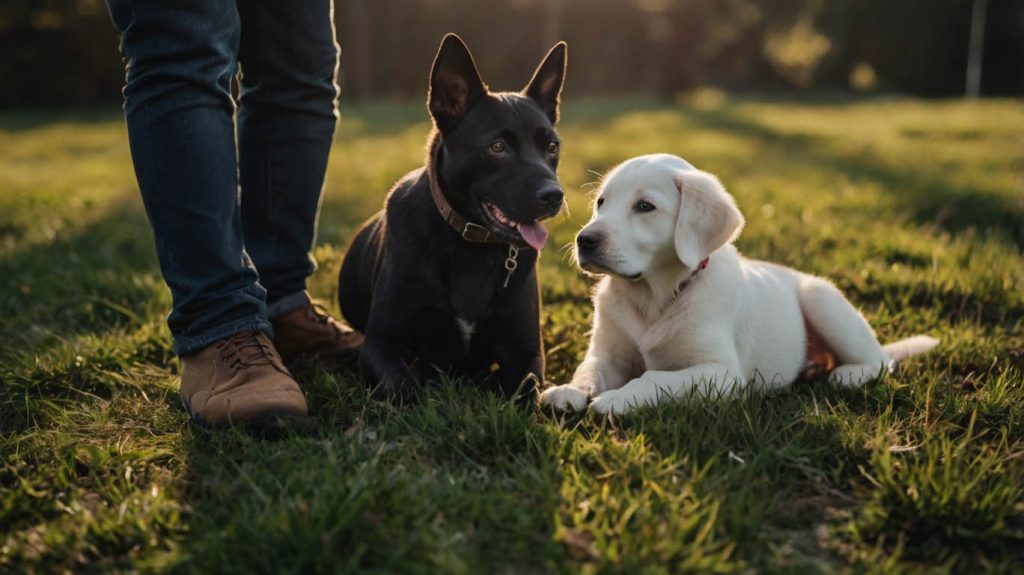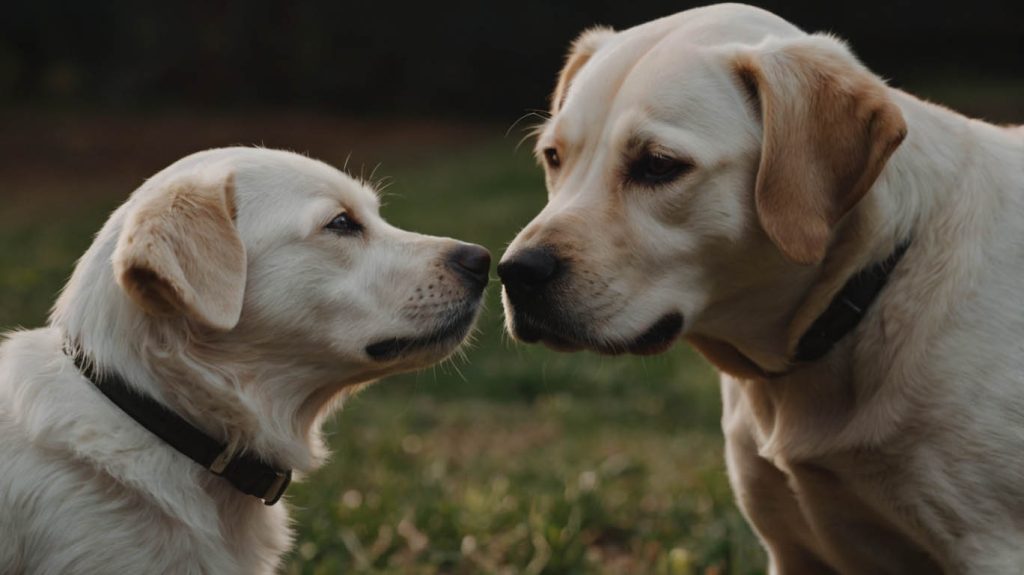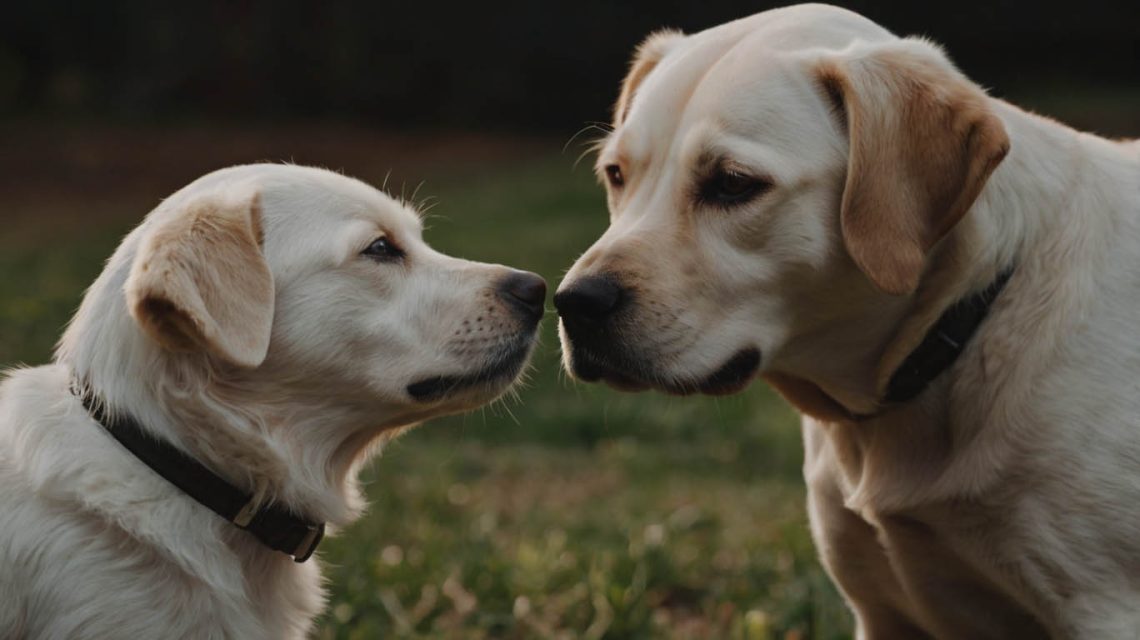How to Introduce a New Puppy to an Older Dog: A Step-by-Step Guide
The decision to bring a new puppy into your home is filled with excitement and visions of two dogs becoming instant best friends, cuddling together on the couch. However, for your resident older dog, the arrival of a tiny, energetic newcomer can feel more like an invasion than a joyful addition. A successful, peaceful integration doesn’t happen by chance; it happens by design. Therefore, knowing how to introduce a new puppy to an older dog correctly is one of the most critical responsibilities you have as a pet owner.
This guide will tell the complete story of a successful introduction, from the crucial preparation before your puppy even comes home to fostering a lifelong friendship. First, we will explore the different perspectives of both dogs. Then, we will walk you through a clear, phase-by-phase action plan. Consequently, you will be empowered to manage this delicate process with confidence, setting your dogs up for a harmonious future together.
The “Why”: Understanding the Challenge of Introducing a New Puppy to an Older Dog
First and foremost, empathy is your most powerful tool. To succeed, you must understand the situation from both dogs’ points of view.
- The Older Dog’s Perspective: Your resident dog has an established life, routine, and territory. They are the king or queen of their castle. Suddenly, a tiny, sharp-toothed creature with no concept of personal space or social etiquette arrives. This newcomer steals attention, chews on their toys, and tries to climb on them. This can be stressful, annoying, and even frightening for an older dog.
- The Puppy’s Perspective: The puppy, on the other hand, is a blank slate. They have just been taken from their mother and littermates. They are looking for a playmate and don’t yet understand canine social cues. Their relentless energy and playful nips are how they explore the world, but this can be easily misinterpreted by a less-tolerant older dog.
Understanding this dynamic is central to learning how to introduce a new puppy to an older dog with patience and care.

Phase 1: The Essential Prep Work Before the Introduction
Your success story begins days or even weeks before your new puppy sets a paw in your home. Proper preparation is non-negotiable.
Setting Up Separate, Safe Spaces
Your older dog needs a sanctuary—a place where they can retreat and escape the puppy’s boundless energy.
- Use Management Tools: Baby gates, crates, and playpens are your best friends. Use them to create a “puppy zone” and a “puppy-free zone.” This gives your older dog a guaranteed place to relax in peace.
- Reinforce the Crate: Ensure your older dog’s crate remains their private den. The puppy should never be allowed inside it.
Scent Swapping: An Early Step in How to Introduce a New Puppy to an Older Dog
Dogs communicate heavily through scent. You can use this to your advantage.
- How it Works: Before the puppy comes home, take a blanket or toy that smells like the puppy and place it in your older dog’s area. Simultaneously, take something that smells of your older dog to the puppy. This allows them to “meet” through scent first, which is a low-stress way to build familiarity.
Refreshing Your Older Dog’s Training
Solid obedience skills give you crucial control during the introduction process. Brush up on commands like “sit,” “stay,” “come,” and especially “leave it.” This is a key part of how to introduce a new puppy to an older dog safely.

Phase 2: The First Meeting – How to Introduce a New Puppy to an Older Dog Safely
The first face-to-face meeting is the most critical moment and sets the tone for the entire relationship. Do not rush this process.
Choose Neutral Territory for the Introduction
Never have the first meeting inside your home, which is your older dog’s territory.
- Why It Matters: A neutral location, such as a quiet park, a neighbor’s fenced yard, or even a quiet street, prevents the older dog from feeling territorially defensive.
- Have Two Handlers: Each dog should have their own handler. This ensures you have full control over the situation.
The Parallel Walk: The Gold Standard Introduction
This method allows the dogs to get used to each other’s presence in a non-confrontational way.
- The Process: Start by walking the dogs on loose leashes in the same direction, but on opposite sides of the street or path. They can see and smell each other from a safe distance.
- Gradually Decrease Distance: If both dogs remain calm and relaxed, you can slowly decrease the distance between them. After several minutes of calm walking, you can allow them to briefly sniff each other (for just a few seconds) before calmly calling them away and continuing the walk. Keep this first interaction short and positive.
Reading Body Language During the Introduction
Knowing how to interpret canine body language is essential for safety. The American Kennel Club (AKC) offers excellent visual guides on this topic.
- Positive Signs: A relaxed body, a loose, wagging tail, and a “play bow” are all signs that things are going well.
- Warning Signs: A stiff, frozen body, a tucked tail, whale eye (showing the whites of the eyes), growling, or raised hackles are all signs of stress. If you see any of these, calmly create more space between the dogs.
Phase 3: Managing the First Days at Home After the Introduction
Once the initial meeting has gone well, the management work inside the home begins.
How to Introduce a New Puppy to an Older Dog’s Resources
The answer is: you don’t. All resources should be managed separately to prevent conflict.
- Separate Feeding: Feed the dogs in separate rooms or in their crates. This prevents resource guarding, which is a common source of tension.
- Manage Toys: Do not leave toys scattered around. High-value chew toys should be given only when the dogs are separated.
- Separate Water Bowls: It’s also wise to have separate water bowls initially.
Prioritizing Your Older Dog’s Routine and Sanity
It is vital that you show your older dog that their life has only gotten better, not worse.
- Maintain Their Schedule: Keep their walk times, feeding times, and bedtime routines the same.
- Give One-on-One Attention: Make sure you carve out special time for just you and your older dog, without the puppy present. This reassures them of their secure place in the family.
Conclusion: Building a Friendship on a Foundation of Patience
Learning how to introduce a new puppy to an older dog is a masterclass in patience, management, and advocacy for both animals. It is a process that can take days, weeks, or even months. Do not force a friendship; instead, create a safe and positive environment where one can grow naturally. By following these steps, you are not just preventing problems—you are actively building the foundation for a beautiful, lifelong bond between your dogs.


